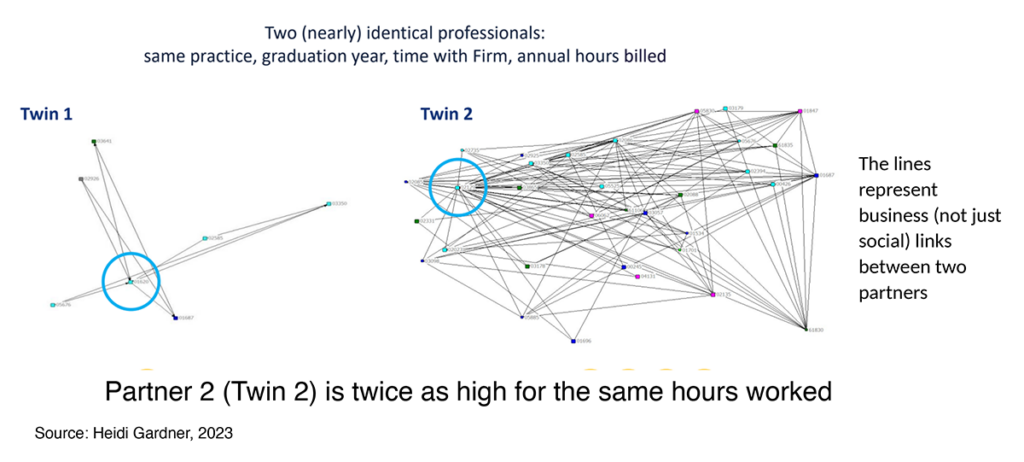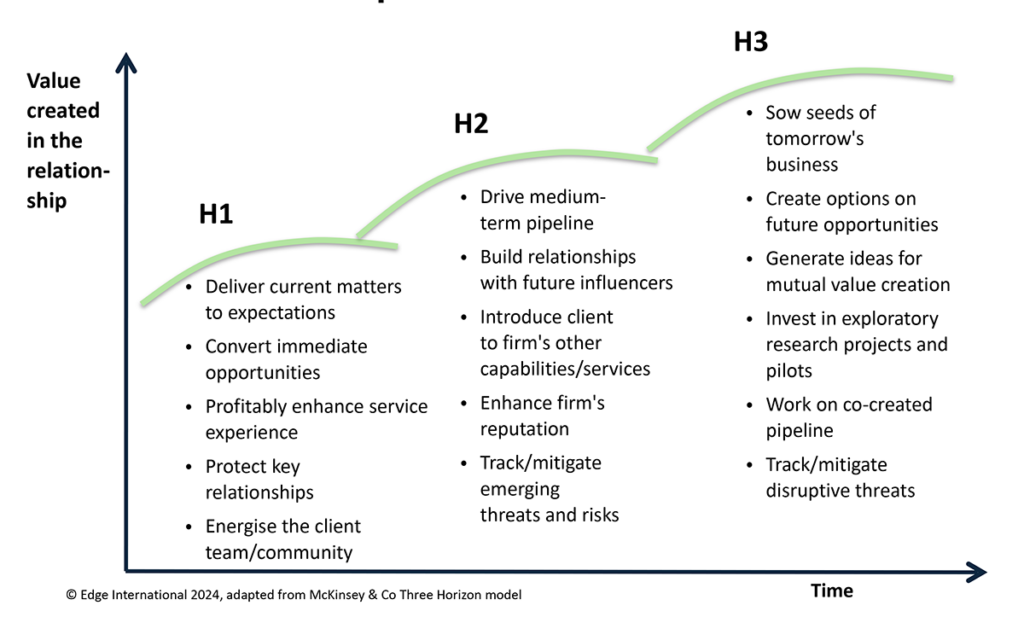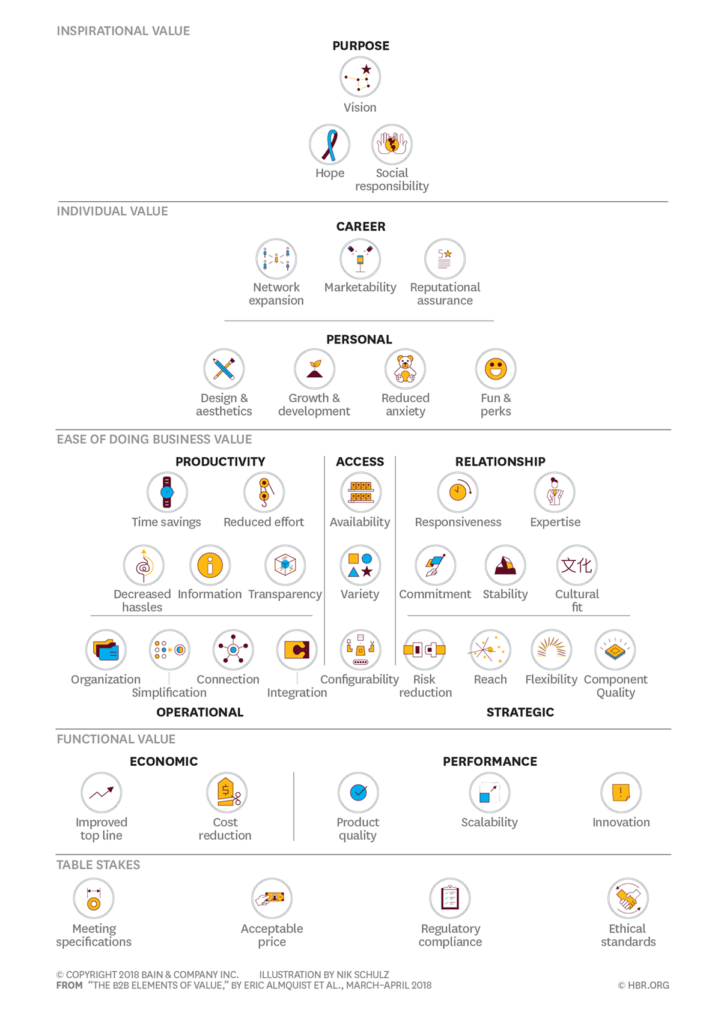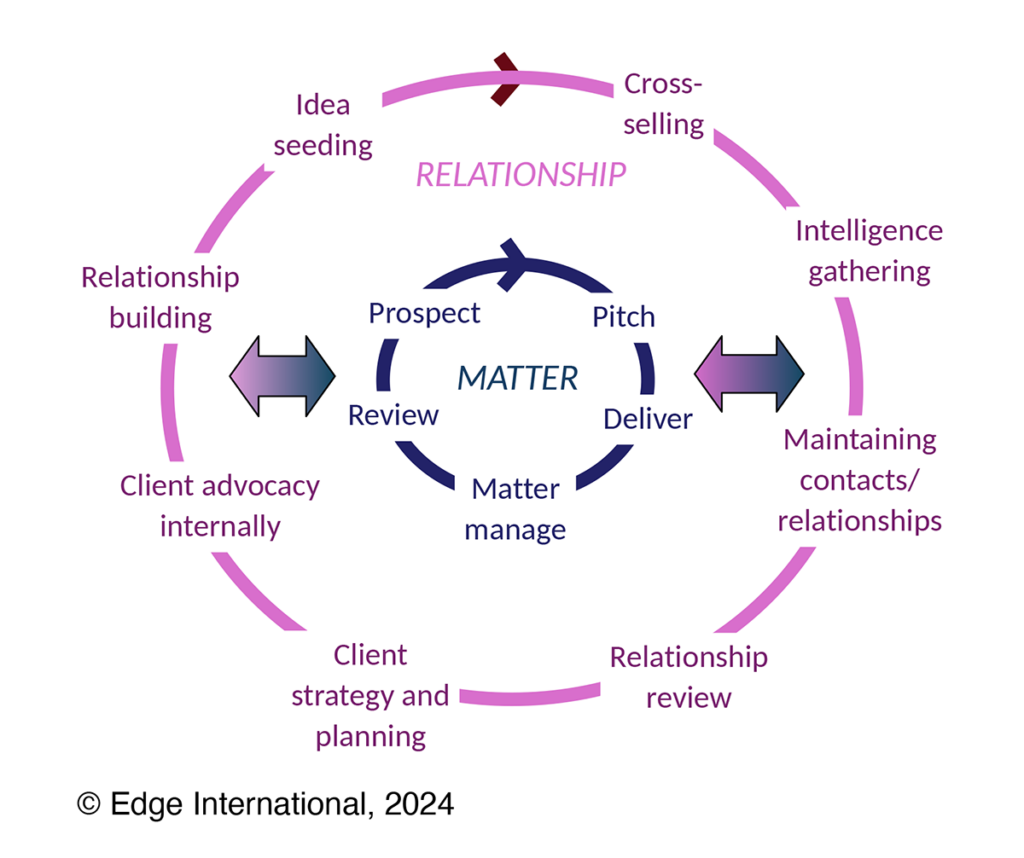Ten Ways to Describe the Client Relationship Partner (CRP) Role

Client Relationship Partners or CRPs are responsible for the overall success of the firm’s long-term relationship with each key client.
Here are ten different ways to describe the CRP role, each with its own nuance and emphasis. These descriptions are useful in creating clarity in expectations, CRP selection, capability development and accountability.
#1 The firm luminary and client advocate
The CRP faces outward and represents the firm to the client. At the same time, they face inward to ensure the voice of the client is heard, and the client’s interests are appropriately served. Read David Maister’s famous post to dive deeper into this job description.
#2 The pedestal seller (aka the Tinder Tactician)
The CRP actively networks within the firm and the client organisation and brokers new relationships. They put colleagues and client contacts on a pedestal and talk them up wherever possible. They start their day by thinking about who they can introduce for mutual benefit.
#3 The strategic account leader
The CRP has the primary role of leading the team of practitioners and functional specialists servicing the client. As with any leadership role, their job is to set direction, communicate the strategy, inspire, motivate, cajole and align the various constituencies to execute this strategy. They span across formal organisation boundaries and facilitate collaboration in the core client team and with everyone in the broader client community. This job is made especially difficult in professional service firms because they usually have signifcant responsibilities without formal authority. They typically would have an internal network map looking like Partner 2 from Heidi Gardner’s recent research:
#4 The planner
The CRP documents a clear set of activities that will help build a successful firm-client relationship over the short-, medium- and long-term. Their plan may look something like this:
#5 The front-door
The CRP is the client’s first point-of-contact and the key person to address any service failures or concerns. They help redirect work to the most appropriate person within the firm that can service their need. They help make the client’s experience frictionless and engaging. This CRP role is a little more passive than the other models described, but it may suit a ‘care and maintain’ relationship that has little profit growth potential.
#6 The rainmaker
The CRP’s job is to maximise revenue and profit from the account. Full stop.
#7 The co-creator
The CRP facilitates the process of aligning the client’s strategic needs with the firm’s capabilities. They explore in some depth the client’s critical problems and opportunities and help bring together integrated bespoke solutions often involving multi parties, technologies and vendors. The CRP’s role would be to understand deeply the key elements that create value for the client. Page 1 of their client plan would be Bain’s 40 elements model applied to their key client:
#8 The intrapreneur
Most relationships need ongoing renewal and inspiration in terms of product, process, people and pricing. The CRP role is to generate new ideas that add value and help get the best ones implemented.
#9 The elder
The CRP role is that of senior door opener, shmoozer, steward and repository of institutional memory. The role is less hand-on in terms of day-to-day account management but they do what’s necessary to influence key decision-makers and help win major new projects.
#10 The relationship choreographer (MY PREFERENCE)
The CRP’s role is to bring the best of the firm to the client and the whole of the client to the firm. They orchestrate a set multi-lateral connections, value exchanges and mutually beneficial projects. They work internal and externally, strategically and tactically, short-term and long-term. The CRP’s job to is drive the Pink process to win and deliver more Blue (see image below). Firms get paid for Blue, not Pink, but the stronger the Pink, the more the firm stays top of mind for new work and the higher the pitching strike rate. The stronger the Pink, the more tolerance there is when a conflict arises around service, price or performance. Good CRPs know how to calibrate their investment in the Pink to optimise Blue outcomes.








